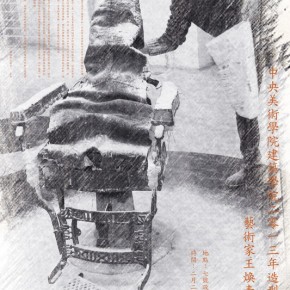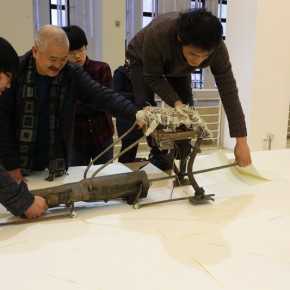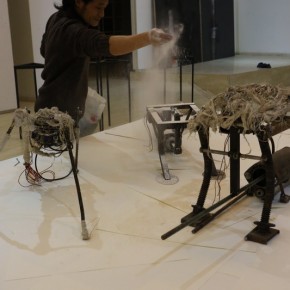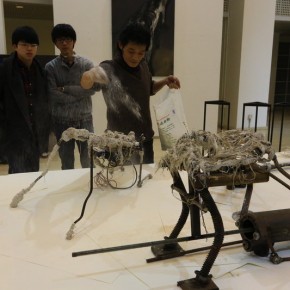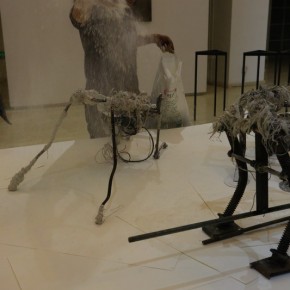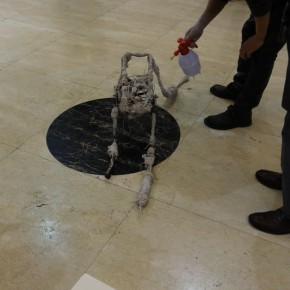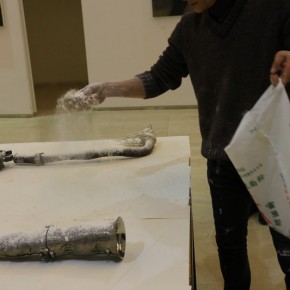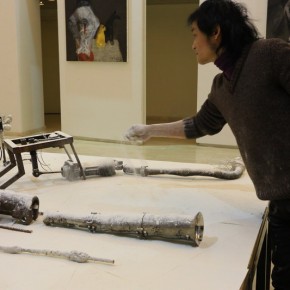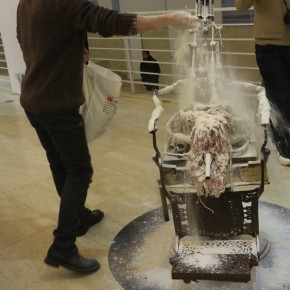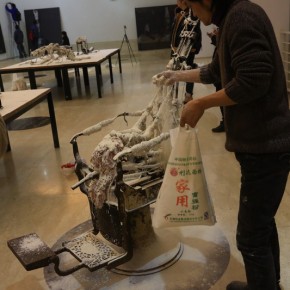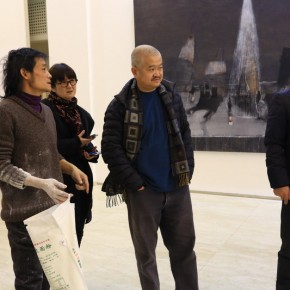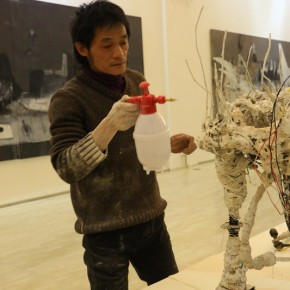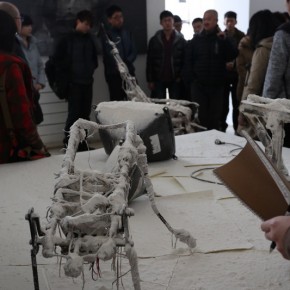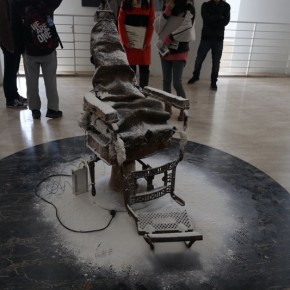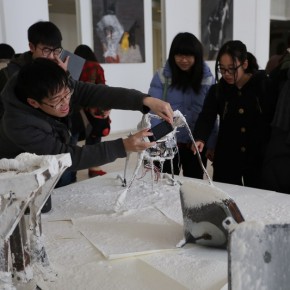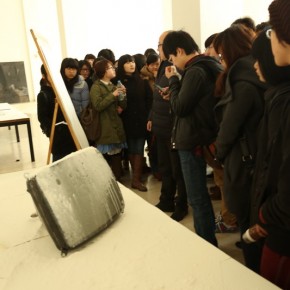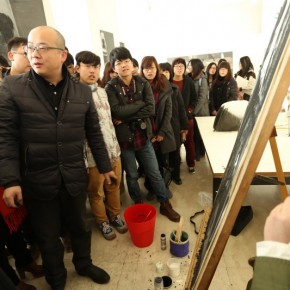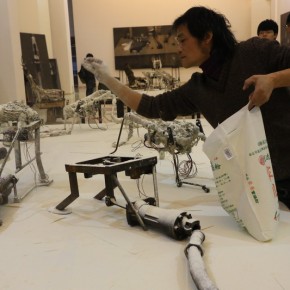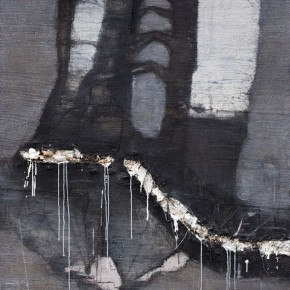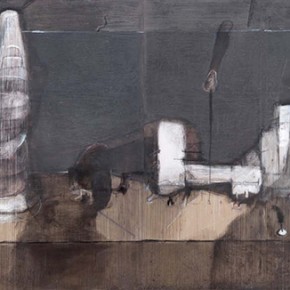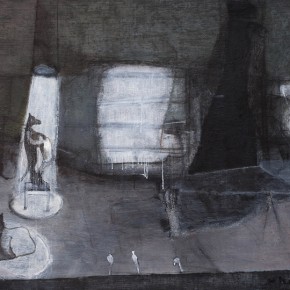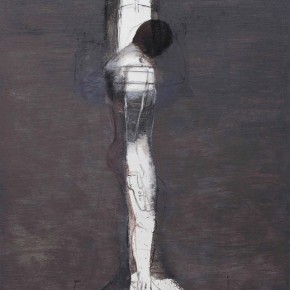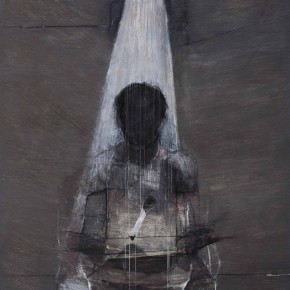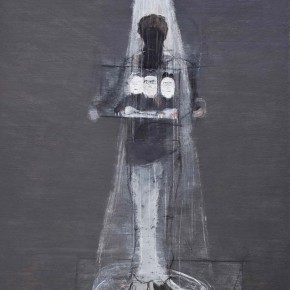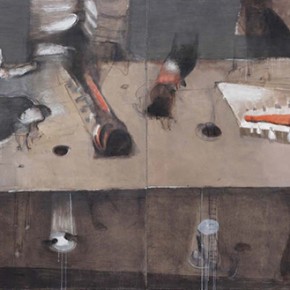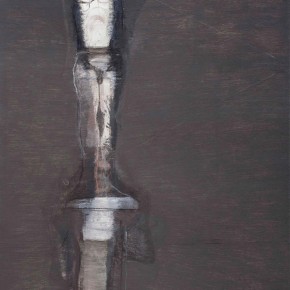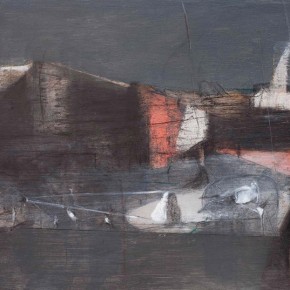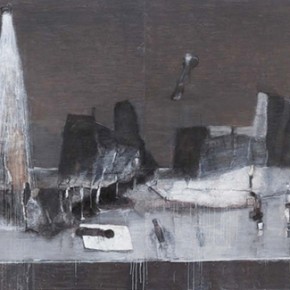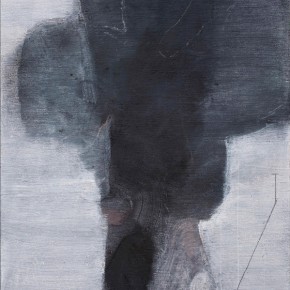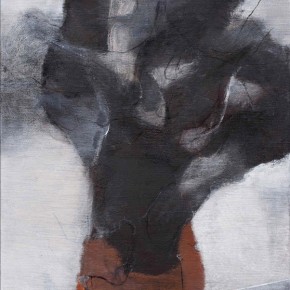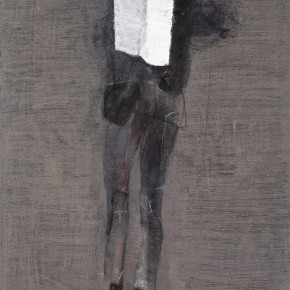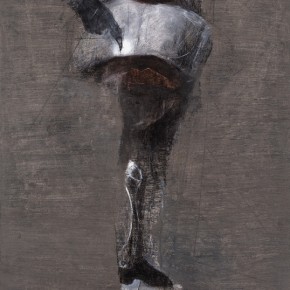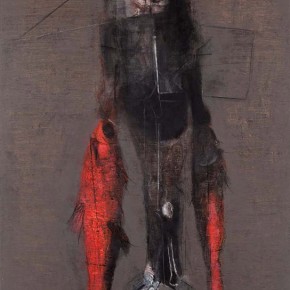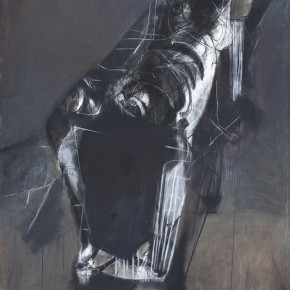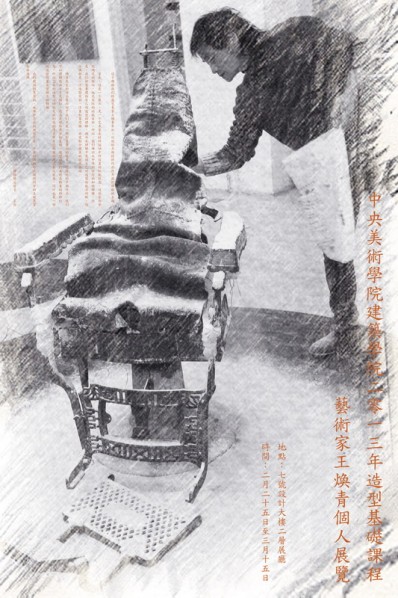
From February 25 to March 15, 2013, Prof. Wang Huanqing, a well-known artist from the Beijing Institute of Fashion Technology, was invited by Prof. Wang Bing, from the School of Architecture, CAFA, to hold an interactive works exhibition, closely related to his teaching at Building 7, CAFA. The space for the course was arranged as an exhibition, and features the artist’s unfinished creations in metal works, as well as the oil paintings he created for the production of the three-dimensional materials. These “three-dimensional material works” were also the theme of the plastic basic course of the School of Architecture, CAFA, in 2013.
Born in the Daur Autonomous Banner of Morin Dawa, Inner Mongolia in 1958, Wang Huanqing was good at oil painting, graduated from Hebei Normal University, majored in Fine Arts in 1982, engaged in art creation and the census of folk art, when he worked in the Department of Cultural Affairs and regional art center in Hengshui area. He was appointed to Hebei Normal University in 1987, completing a course in oil painting in the CAFA. Currently he teaches the specialty in New Media and Animation at the College of Art and Design, Beijing Institute of Fashion Technology. Wang Huanqing was actively involved in the Chinese art movement that happened in 1985, considered to be a maverick artist, with a unique clue in the field of development of contemporary art.
The exhibition was considered as a metaphor for “art interactive installation” by Prof. Wang Bing, who planned and presided over the art activity and the works of Wang Huanqing were the subjects of study, performance, and interpretation for the students from the School of Architecture. During the exhibition, Wang Huanqing reconstructed the scene and interacted with the students, he then held a lecture related to the works. Thus, a static exhibition had gradually turned to inspire students to create through the interactive thinking course.
In the “Art Interactive installation”, the exhibition and teaching courses were the objects for each other, which put forward a lot of artistic issues, for not only the artist, but also the students and teachers from the art academies. How to make students start their own imaginative thinking in plastic, exploring the different methods of the feasibilities of plastic within a free and experimental environment? Students and audiences were inspired by the image-conscious of Wang Huanqing’s works and displays.
Through such courses and exhibitions, the teachers of the basic plastic course of the School of Architecture hope the students can understand: painting is neither a simulation, nor a replication of secular prototype. For a creator, plastic creates a variety of illusions of the object. Therefore, the artistic plastic activity allows artists to portray their fantastical scenes through their unique personal expressions, in addition, creating a conscious independent conversion of the plastic installation.
The whole process of the “art interactive installation” was recorded by cameras, while the various questions, derived from the exhibition and teaching, were concerned and propagated on a social level, as the common problems in contemporary art and art education. At the same time, the “Teaching Accidents - Wang Huanqing’s Art Interactive Installation”, is now being edited and will also render a meaningful activity with the use of a large number of pictures, texts, and a dialogue between Wang Huanqing and Wang Bing.
Today, an artist should initially be an intellectual, and a thinker that can freely control different medias. To a certain extent, “interactive installation” reflected Wang Huanqing’s art concepts: first of all, the private life of the artist is the artwork, and only when it is nourished and of good quality, does it have the qualification for dissemination to the public. This art activity was his first solo exhibition, to some extent, reflecting his picky art attitude.
A students’ exhibition will be held to contrast with Wang Huanqing’s works, at the end of the course. The audience will see the difference of the works nurtured by the hearts of more than eighty students that originate from the exhibition installation.
Photography and text/ the School of Architecture, CAFA, and artist Wang Huanqing.
Translated by Chen Peihua and edited by Sue/CAFA ART INFO


